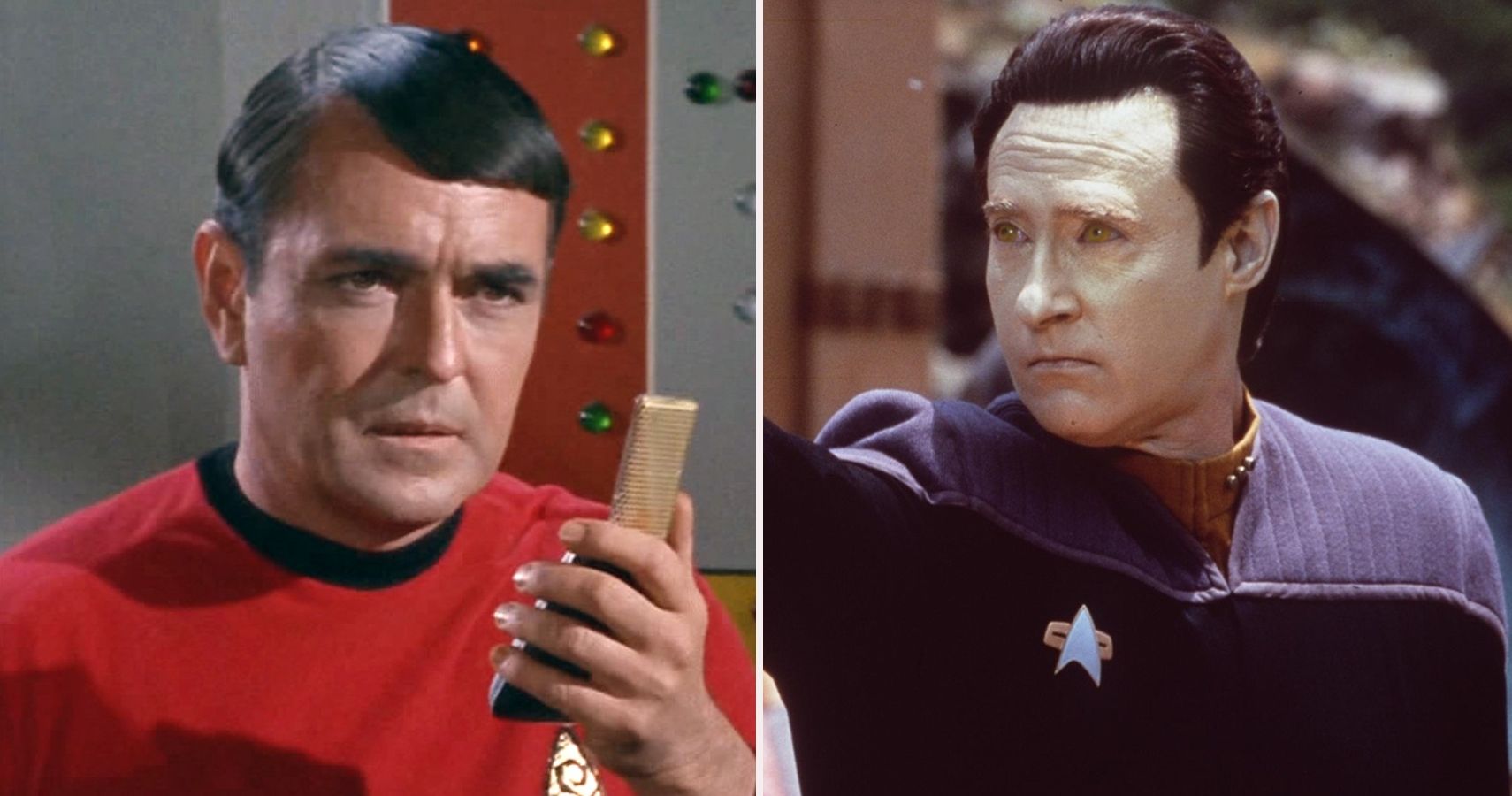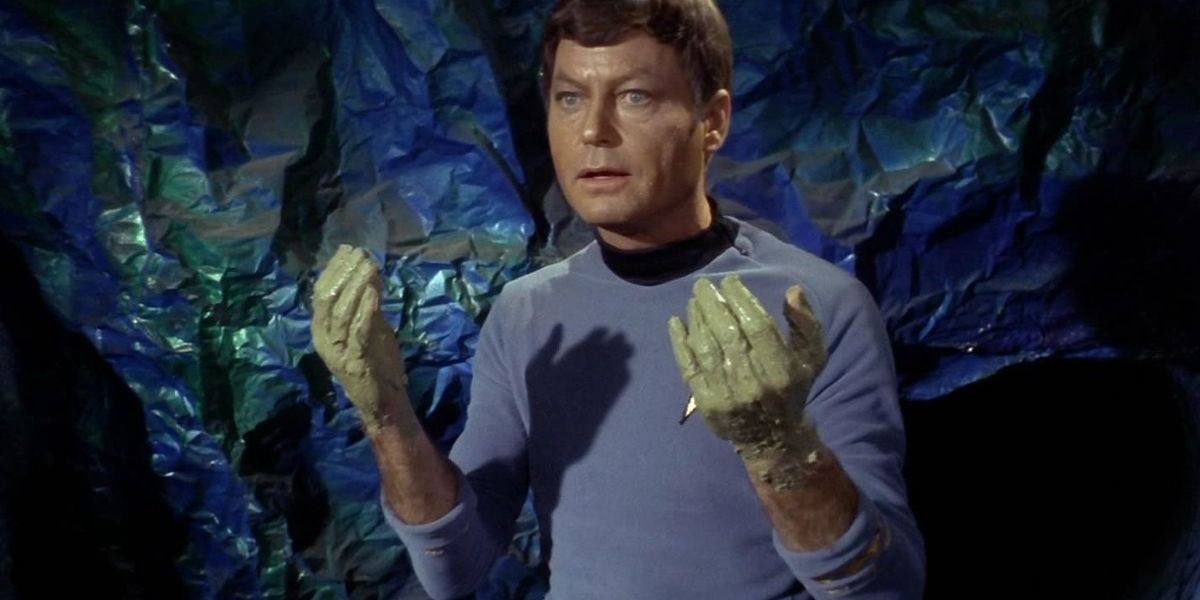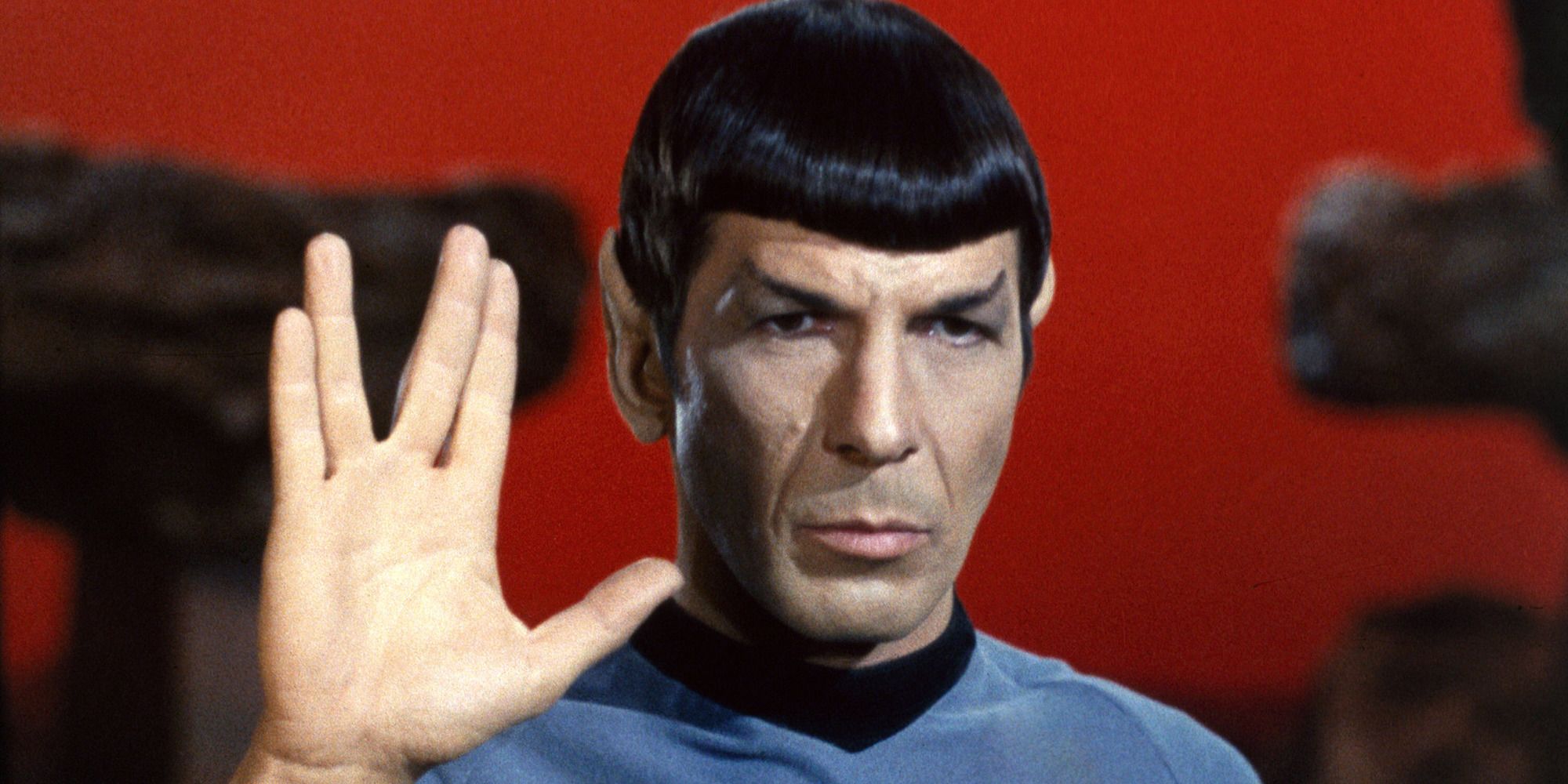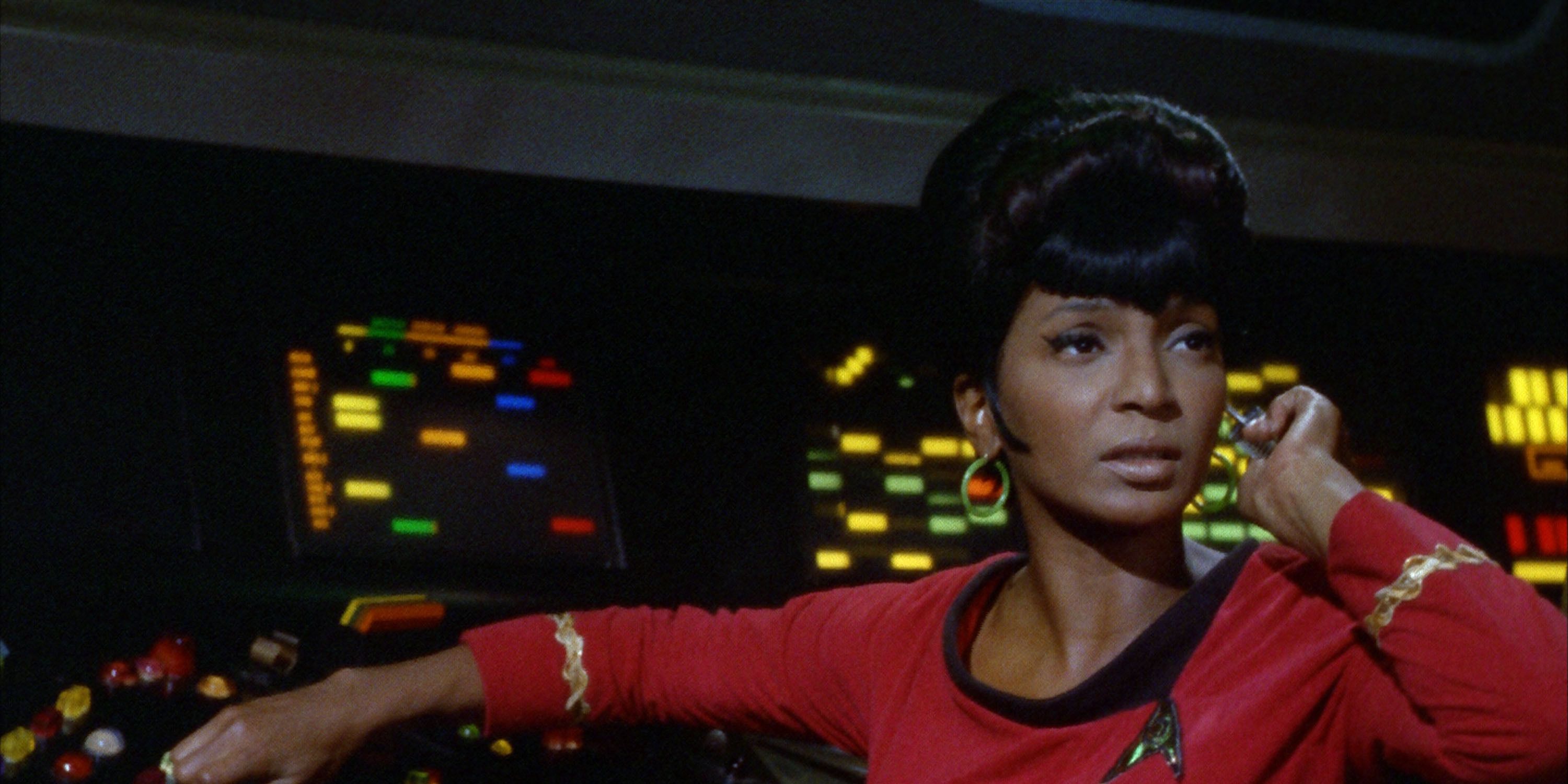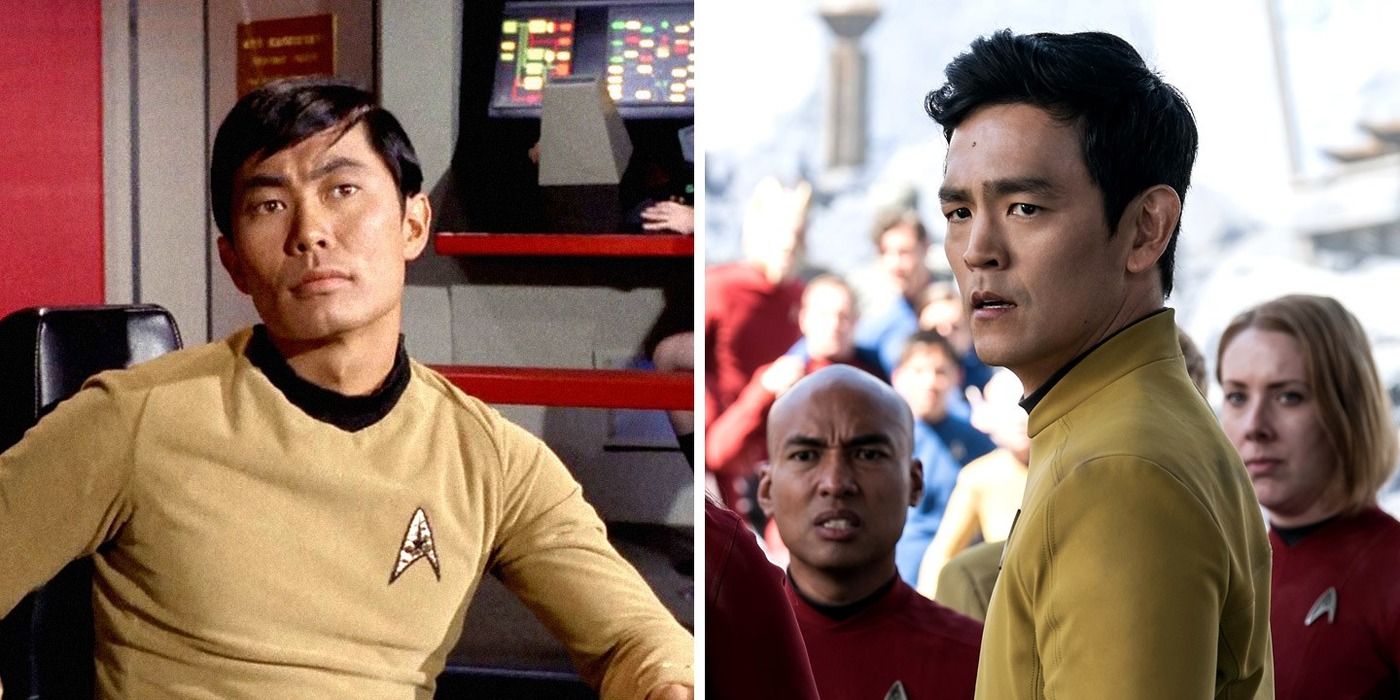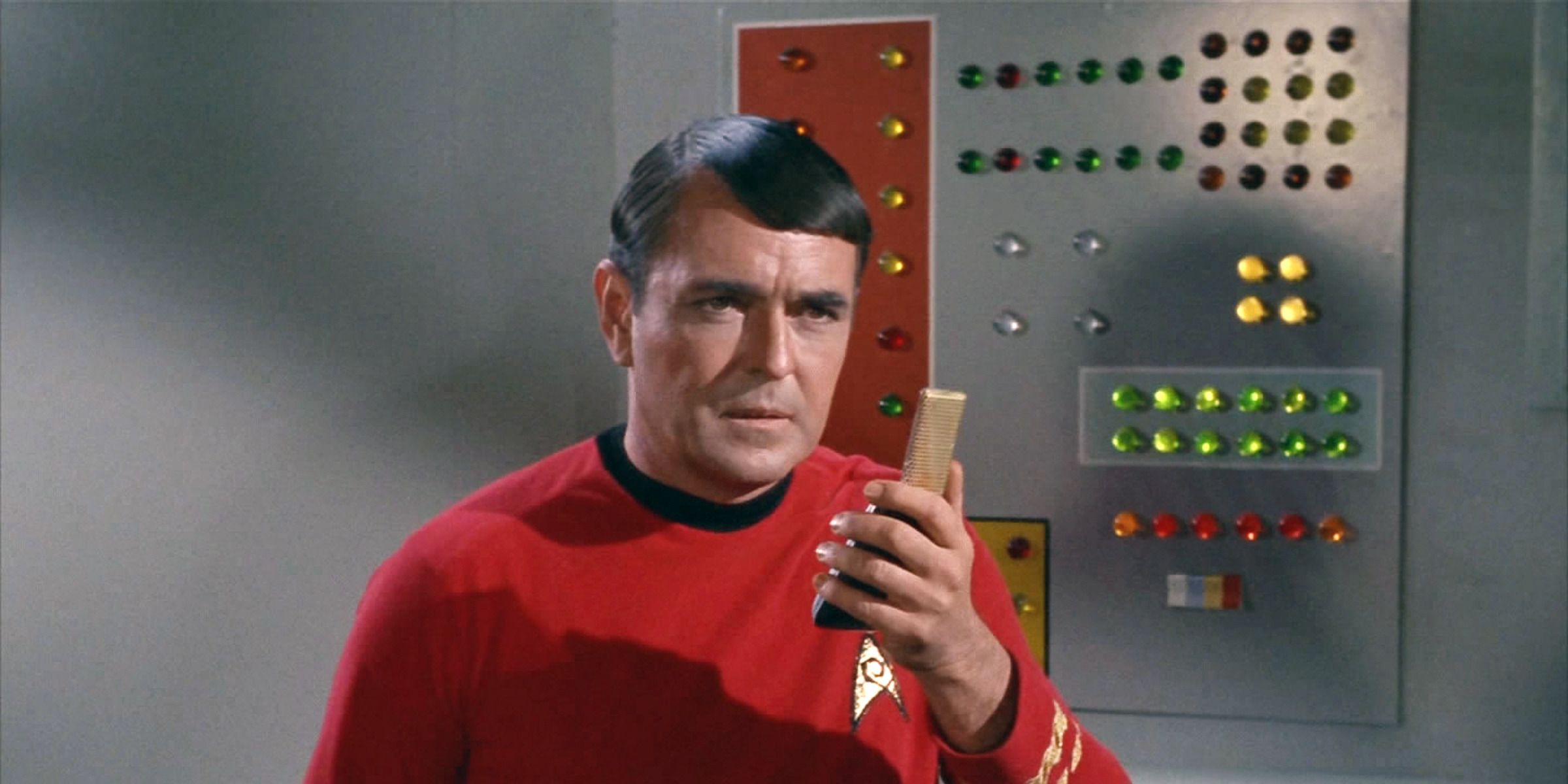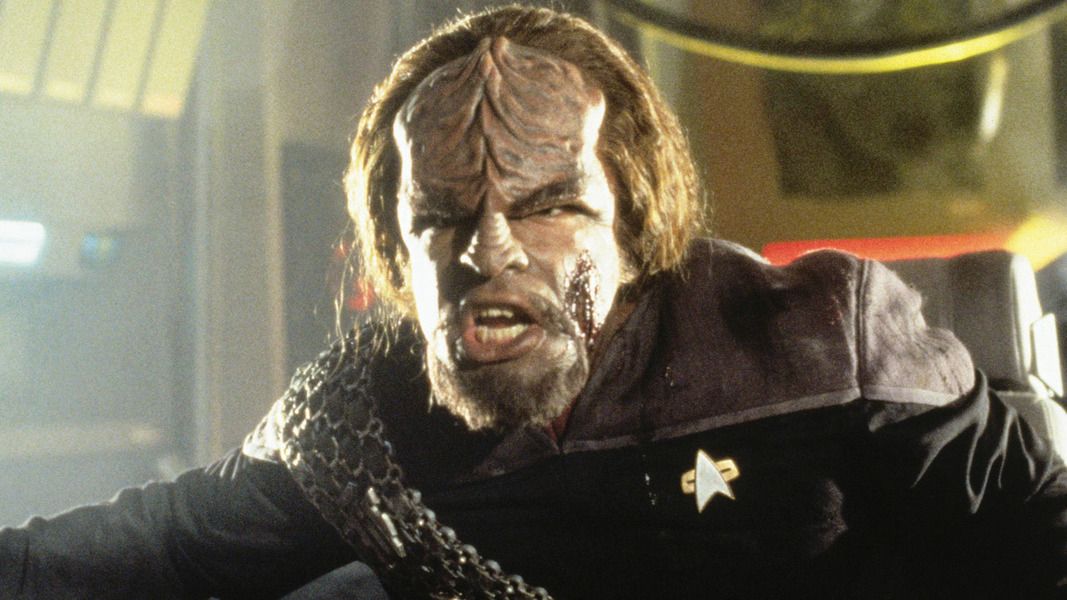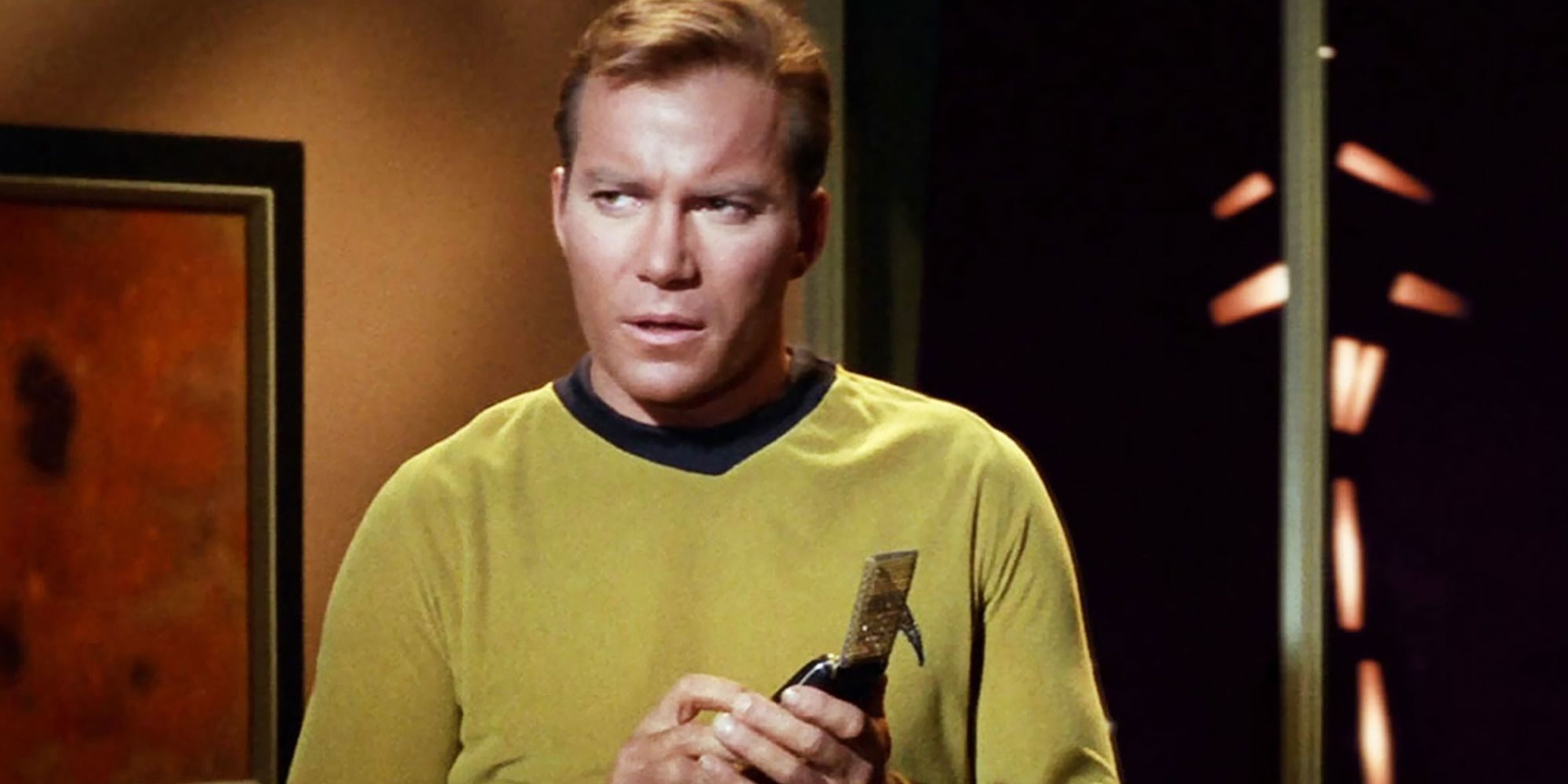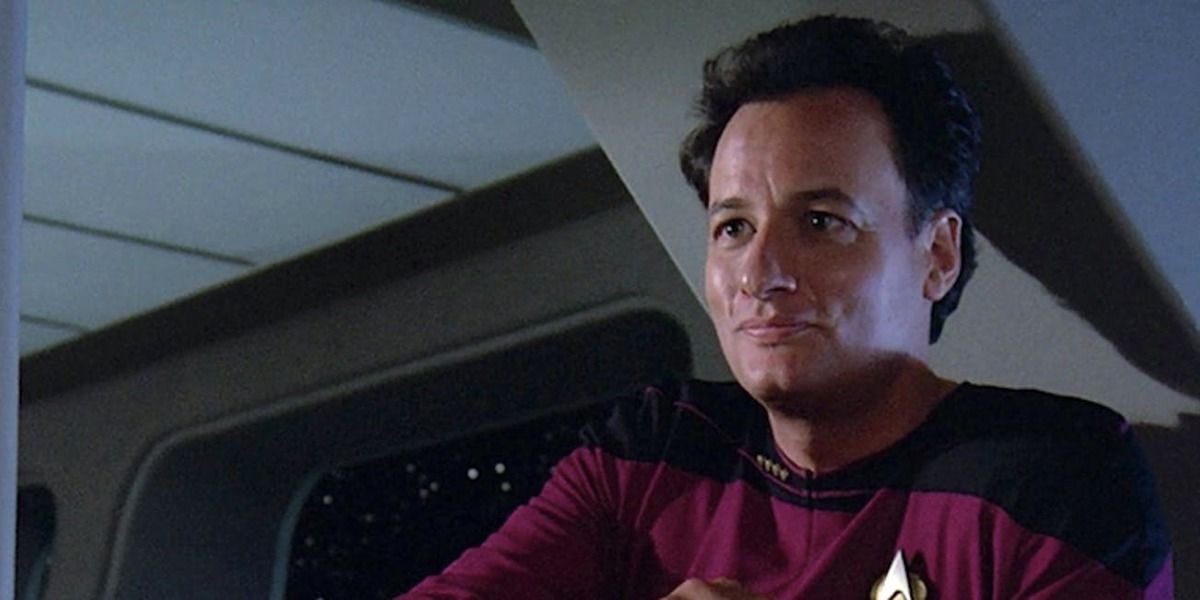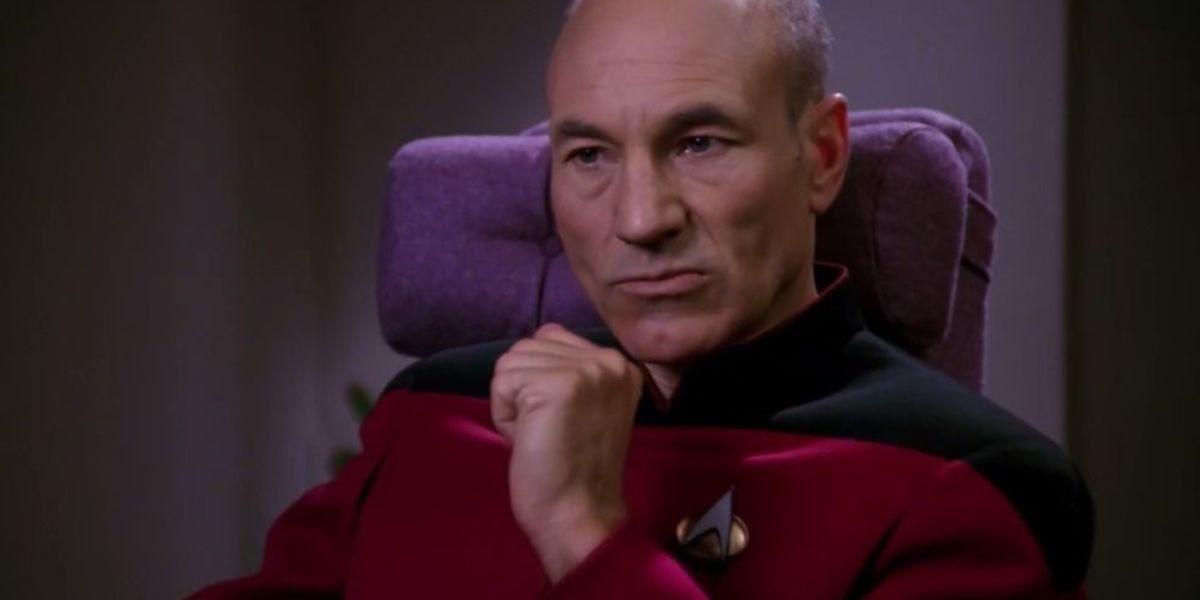If a group wears basically the same clothes and carries the same or few weapons, it might not look like an adventuring party at first. This is when you look at a character's role and alignment to determine their class. When it comes to Star Trek, every crew member has an important role in the party and a certain skill set they use to do their job effectively.
Their actions tell you if they are good or evil. It's not only a technique you can use to determine the D&D classes of your favorite Star Trek characters but an ideal way to learn about how different classes function in a D&D game. Here are the Dungeons and Dragons classes of several popular crew members of the USS Enterprise.
Dr. McCoy: Cleric
Jim, I'm beginning to think I can cure a rainy day! - Dr. McCoy, "The Devil in the Dark."
Not only the ship's doctor but also her conscience, McCoy is clearly the spiritual center of the Enterprise if not her Captain. Roll that together and you have a Cleric. McCoy also seems to be closely connected to the feelings of the crew, including the officers, casually defying orders to protect the crew and his friends. He's the one that informs Kirk about the crew's morale and their emotional state, and he doesn't mince words with his superior officers. This gives him a Chaotic Good alignment, which contrasts with the Lawful Good of characters like Spock or Picard but goes well with more impetuous characters like Scotty and Kirk. It's also typical of the Cleric class.
Spock: Monk
The serious and solitary demeanor that Leonard Nimoy channels into Spock was inspired by the kindly but dour Orthodox Jewish Community in which he grew up. Everyone's favorite Vulcan carries himself very much like a holy man, balancing both intelligence and wisdom while quietly battling his own personal demons with strict discipline. His years of isolation from humans on Vulcan was also a time of intense study as he sought to prove himself to his Vulcan family and peers, another trait of Monks.
Although he is trained in using a phaser, his real talent is in hand-to-hand combat with his precise and deadly Vulcan neck pinch, very much the power a Monk would have.
Uhura: Bard
The Communications Officer, Uhura is in charge of communication and diplomacy, responsibilities often assigned to charismatic Bards. Uhura actually does sing on the show several times to lift the spirits of her crewmates. In Season 1 Episode 2 of the original series, she sings to the title character Charlie X, and in another episode entitled "The Conscience of the King" she sings over the intercom to keep O'Reilly company. She even puts on a song and dance number to lure and trap some enemies in Star Trek V: The Final Frontier. Her qualifications for the Bard class don't stop there. Uhura is an expert in xenolinguistics, cryptography, and philology, all forms of spoken or written communication. To top it off, her full name, Nyota Uhura, is Swahili for Star of Freedom. That could be the best name ever for a Bard.
Sulu: Wizard
Hikari Sulu is an expert at his job, and most people don't even know exactly what that is. Put simply, Sulu drives. Let that sink in for a moment. It takes some natural talent along with years of training to actually pilot a starship, never mind the flagship of the United Federation of Planets. The powers of a Wizard begin with natural or genetically inherited aptitude along with decades of study.
Sulu spent years honing his skills at the Starfleet Academy, and he's steered the Enterprise to safety many times.
Scotty: Rogue
Could an engineer who specializes in sabotage be anything else? Scotty's skills are closer to typical Rogue talents, like lockpicking, espionage, and stealth. Scotty is a strong melee fighter when he enters the fray but his real talents happen behind the scenes. He saved the day countless times by working his engineering magic in Star Trek: The Original Series, successfully converted the cargo bay of a Klingon warbird to carry humpback whales, hatched a plan to sneak himself and a wayward Kirk back on the Enterprise in the Star Trek reboot of 2009, and sabotaged the USS Vengeance in Star Trek: Into Darkness.
Worf: Barbarian
Ever get the feeling that Worf doesn't belong under all that uniform? Worf keeps his natural instincts under wraps as protocol dictates, but he likes to fight, and he's good at it. His background echoes the traits of a Barbarian upbringing. The Klingon culture swings more to the side of Lawful or Chaotic Evil, with the honor of a fighter and victory held in higher esteem than anything else. The affinity for big, impressive weapons, often of the two-handed variety, is another dead giveaway.
Worf wasn't afraid of taking the fight to the enemy, with both the pen and the sword. Let's not forget that Worf was a skilled lawyer before he joined Starfleet. He defended Captain Kirk and Captain McCoy on charges of murder and conspiracy. This was a worthy battle that he would lose, and pay dearly for from a social standpoint. So why did he do it? Like others in this class, Worf has a high capacity for both might and compassion, and this character helps him retain a stubborn Chaotic Good alignment despite the outcome.
Captain Kirk: Fighter
Kirk himself says he's a soldier, not a diplomat, in the classic episode "Errand of Mercy." However, he's a fighter who doesn't like to follow the rules. He could be a Barbarian given how often we see him with his shirt off, but since he prefers phasers and hand-to-hand combat as opposed to heavier two-handed weapons and puts a lot of thought into his confrontations, Captain Kirk is a Fighter. It's not just his choice of weapons or fighting style that determines his class, it's how versatile his skills are. Kirk can be a swashbuckler, an adventurer, an explorer or a skilled field commander.
All of these skills also fall under the Fighter class. He's also a skilled leader, but what keeps him from being a Paladin is his alignment. Kirk just can't keep his eye on the Prime Directive and disobeys orders on occasion. When he leans more towards the soldierly side, however, his more ruthless fighting side shows itself. His incarnation in the episode "Mirror, Mirror" was a great example of how a Chaotic Evil Fighter would look.
Q: Warlock
Q served briefly on the USS Enterprise under in the TNG episode, "Déjà Q" when the Q Continuum removed his powers, so we can examine his class along with other crew members. Q would make a good Sorcerer, but the fact is his amazing godlike powers come from a powerful outside entity and can be removed when he steps out of line. His alignment wavers between Lawful Evil, for example when judging humanity's right to exist, or Chaotic Good, when he relents and uses his power to save the whole crew which is also typical of a Warlock.
He's an antagonist when he first appears, in fact, one of the most dangerous that the crew ever faces in their adventures, partly because you can't pin down his alignment. Put it all together and you've got a Warlock with a compelling character arc.
Data: Sorcerer
Data was born, or in this case, built with his android abilities, the same way a Sorcerer is born with their talents. He has to learn to understand aspects of his character that pertain to both humans and androids. The character of Data is very childlike in this sense as he learns about the feelings and actions that humans take for granted. Understanding human features help him use his innate abilities, which is similar to where a Sorcerer comes from and what they need to learn. This is mostly intuitive and not so much book-learning, and watching Data function as part of the USS Enterprise crew is like watching a Sorcerer advance from level to level.
Captain Picard: Paladin
A methodical thinking fighter who would rather talk about peace than wage war, who uses his brain as opposed to his brawn while serving a higher power, would have to be a Paladin. Picard is fearsome in battle, as his encounters with mad scientists and The Borg show, but Picard has a level of discipline and diplomacy that Kirk lacks. Both men are charismatic and intelligent with the leadership skills that every Captain needs, but alignment is what puts the two most popular USS Enterprise captains into different classes. Picard adheres to Lawful Good, but he's more of a warrior philosopher than a daring adventurer, and always plans a strategy based on practicality as opposed to an emotional response.

